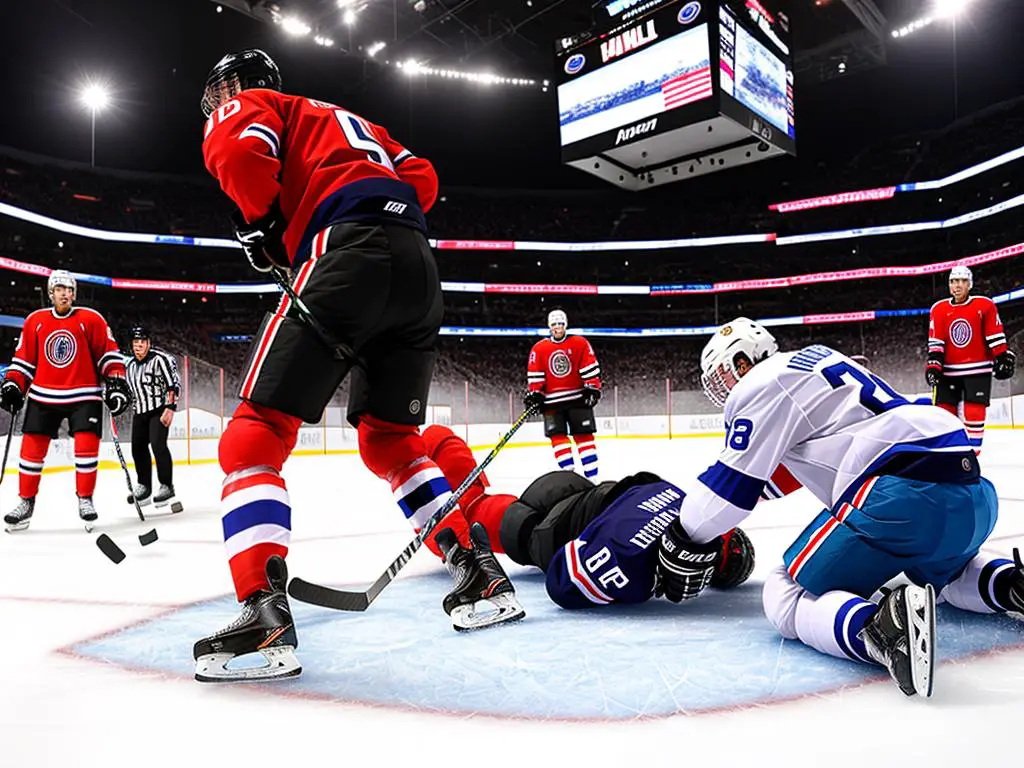Indulging in a scoop of our favourite ice cream flavour is a delight that many of us relish, especially during those hot, sunny days. Yet, the enchanting journey of how this chilly delicacy came to grace our lives is often overlooked. Tracing the icy tendrils of ice cream’s history back to its inception, we uncover it wrapped in the mythical narrative of ancient China and Persia. It travelled through time, evolving from an elite luxury in bygone eras to a pleasurable treat within everyone’s reach. This journey spans from the Middle Ages to the Renaissance period, unravelling how the indulgent dessert spread its sweet influence, eventually finding its way to Europe and the New World. Alongside the echo of bubbling factories and humming machinery from the Industrial Revolution, the manufacturing of ice cream underwent massive transformation. As we sail through to the present day, the reverie continues with an exploration into the bold brands, diverse flavours, and innovative spins set against the backdrop of our modern world.
The Origins of Ice Cream
The Ancient Origins of Ice Cream
Ice cream holds a cherished place in the hearts and palates of people globally today, but its origins trace back to the ancient times. The earliest inklings of what would become ice cream appeared in ancient China and Persia, well before the ice cream we know and love today ever existed.
China is often credited with the invention of a dish similar to ice cream, back around 200 B.C. These frozen mixtures comprised milk and rice, subsequently packed into the snow to freeze. Interestingly, these were more like icy rice puddings, a far cry from the delightful treat we recognise as ice cream today.
Similarly, references to a cooling delicacy can also be found in the annals of Persian history. Around 500 B.C., the Persians invented a treat they called ‘sharbat’. It was a combination of crushed grapes, ripe fruits, verjuice, and snow brought down from the mountains. This special delicacy was believed to be served to royalty during summers to help them cope with the heat.
However, it’s essential to note that these early versions neither used cream nor the churning process vital for creating ice cream in its modern form.
Ice Cream – A Dessert Reserved for the Affluent Throughout the ages, the transformation of this dessert has been intriguing, and to some extent, exclusive. In countries such as China and Persia, these icy treats were regarded as luxuries, enjoyed primarily by royalty and the well-to-do minority. Even as these frosty delights made their journey to Europe, they continued to be a delicacy chiefly reserved for the privileged. As far back as the 13th century, Marco Polo is reported to have introduced an early formulation of ice cream to Italy from his trips in the East. This was just the inception of a lasting fascination. With the evolution of this recipe, which incorporated the addition of egg yolks and eventually cream, the opulent ‘gelato’ was born. Nevertheless, it wasn’t until the 16th century that the ice cream as we recognize it today, began to take shape. Catherine de Medici, who is given the credit for introducing ice cream to France, hired an Italian chef who possessed the skill to create flavoured ices and creams. These were served at high-profile feasts and rapidly gained popularity among the French blue-bloods. In England, King Charles I took such a fancy to this dessert that he is said to have paid his chef a significant sum to keep the recipe under wraps, making sure it stayed a royal luxury. Therefore, for many years, ice cream continued to be a treat savoured only by the affluent. The democratisation of ice cream, as we know it today – reasonably priced and accessible to all, didn’t kick off until much later, around the 18th century, with the advent of ice houses and enhanced freezing techniques. Presently, the rich history and evolution of ice cream serve as a testament to how this simple frozen dessert advanced from a luxury to a universally adored sweet dish.Ice Cream in the Middle Ages and Renaissance
Ice Cream in the Middle Ages The ancestry of ice cream is not accurately established, but it does trace back to the early Persians and Arabs. The peoples of these eras were known to crush ice and snow, blend it with fruit juices, and consume the mixture predominantly for cooling down. As for the Middle Ages, there’s a bit of a debate about what represented “ice cream”. However, it’s widely agreed that various iced desserts were relished by many, chiefly within royal settings, throughout this period. The preparations typically included a mix of snow or ice, honey or sugar, and flavourings like fruit or flower extracts. The dissemination of these iced delicacies throughout the Middle East is often credited to Arab traders and fighters who brought along sugarcane and novel cultivation techniques. Marco Polo, the Venetian explorer, is frequently acknowledged for introducing a primitive version of ice cream to Europe, towards the end of the 13th Century. His adventures in the Far East led him to a frozen milk-based dessert in Mongolia, similar to the sherbet we know today. Although the veracity of these claims is often questioned, it’s certain that by this era, frozen desserts had landed in Europe.Renaissance: The Introduction of Ice Cream to Europe
The Renaissance period marked significant developments in art, culture, and cuisine, including the refinement of ice cream. Historical documentation indicates that iced desserts became particularly fashionable at the Italian courts. Caterina de Medici, when she married Henri II of France in 1533, is said to have brought with her Italian chefs who had recipes for flavoured ices or sorbetto. These chefs purportedly used sweetened milk instead of water in their recipes, thus creating the earliest forms of what we would recognise today as ice cream.
During the 16th Century, ice cream began making its way through France and later to other European countries. In England, Charles I reportedly paid his chef to keep his ice cream recipe a secret from the public, making it a royal delicacy. However, it wasn’t until the late 17th Century that ice cream became available to the general public, when Sicilian Procopio Cutò introduced gelato to Parisians through his café.
Introduction of Ice Cream to the New World
Ice cream initially traveled from Europe to the New World in the 18th century. The European settlers familiarised the American colonists with this deliciously refreshing novelty, who in turn, gladly accepted and relished the dessert. It was the Quaker colonists who are typically attributed with having first introduced ice cream to the United States. In fact, tales suggest that key historic figures like George Washington, Thomas Jefferson and Benjamin Franklin were such fans of the delicacy that they often included it in their guest menus. Thomas Jefferson even reportedly had his own favourite homemade recipe, a memorable version of vanilla ice cream.
However, it was not till the 19th century, with the innovation of mechanical refrigeration, that ice cream production and distribution exploded into a major industry. This crucial technological breakthrough allowed ice cream to be kept frozen for extended durations, turning it from an elitist pleasure to a mass-enjoyed dessert. From the Middle Ages through the Renaissance and right up to the present day, the evolution of ice cream continues to underline the extent of human culinary creativity and our uniform fondness for this delightful chilled dessert.
Industrial Revolution and Mass Production of Ice Cream
The Emergence of the Ice Cream Maker
The Industrial Revolution in the 19th century brought with it an era of groundbreaking technological advancements that radically altered various aspects of life, not least of which was food production. One such significant incident in the journey of ice cream was the creation of the ice cream maker in 1843, thanks to an American woman named Nancy M. Johnson.
This pioneering technology featured a paddle, also known as the dasher, which was persistently revolved inside a cylinder via a crank handle. As this handle was rotated, it continuously stirred and scraped the ice cream mixture housed inside the cylinder. This process staved off the growth of big ice crystals, thereby ensuring a smoother, creamier consistency. Johnson’s patented design drastically transformed the process of ice cream production, making it not only significantly easier but also notably quicker.
The Influence of Refrigeration Technology
The spread of refrigeration technology during the latter half of the 19th century further transformed the ice cream industry, making it possible to store and transport ice cream without it melting. Prior to the invention of the refrigerator, ice cream was typically produced and sold seasonally, as it had to be made in the presence of natural ice.
With the advent of refrigeration, ice cream could be produced, stored and transported in larger quantities and all year round. This advancement boosted the growth and popularity of ice cream, with several ice cream parlours opening throughout the United States and Europe.
The Impact of Factories and Mass Production
As the Industrial Revolution progressed, the manufacturing of ice cream shifted from small local operations to large-scale factories. These factories used sophisticated machinery and techniques to produce ice cream on a mass scale.
Factories could produce ice cream more efficiently and rapidly than smaller operations, leading to increased availability and reducing the cost of production. This made ice cream more widely accessible and affordable to the population, helping to increase its popularity.
By the late 19th century, several American companies were mass producing and distributing ice cream, including Borden and Hershey. British company, Lyons, began to mass-produce ice cream in the early 20th century.
The mass production of ice cream also led to the development of the ice cream cone. At the 1904 World’s Fair held in St. Louis, Missouri, an ice cream vendor ran out of dishes from which to serve his product and teamed up with a nearby waffle vendor to sell his ice cream in a rolled waffle, which could be eaten. This invention further popularised ice cream, as it could now be enjoyed on the go, responding to the faster pace of life brought on by the Industrial Revolution.
On a concluding note, it was indeed the Industrial Revolution that contributed to significant improvements within the ice cream industry. This period bore witness to the invention of the ice cream maker, the dispersion of refrigeration technology, and the inception of large-scale factories – all integral to mass production. These trailblazing innovations transformed ice cream from being an occasional luxury to a widely available and consistently popular food product.
Modern Ice Cream: Brands, Flavours, and Innovations
The Rise of Renowned Ice Cream Brands
Moving into the 20th century, the ice cream industry too experienced a substantial metamorphosis due to further industrialisation and pioneering manufacturing processes. This allowed individual brands to take lead, hence, laying the groundwork for our current perception of modern ice cream.
For instance, Baskin-Robbins, celebrated for their unique concept of 31 flavours (each representing a day of the month), was founded in the United States in 1945 and has since evolved into an international brand, constantly introducing inventive flavours. Coincidentally, another American brand – Dairy Queen – was also on the rise, gaining recognition for its distinctive, signature soft serve.
Simultaneously, mid-20th century saw British ice cream brand, Walls, and the Italian brand, Gelato, gain popularity within their respective countries. Walls introduced the idea of ‘ice cream on a stick,’ a revolutionary means of consuming ice cream while Gelato won over hearts by popularising a distinctly rich and creamy version of the Italian ice cream.
Flavours: From Traditional to Experimental
The dawn of the 21st century broadened the spectrum of ice cream flavours beyond the conventional Vanilla, Chocolate or Strawberry. Ben & Jerry’s, an American brand established in the late 20th century, began featuring an admirable variety of unusual flavours, often with humorous names, propelling the notion of creative ice cream flavours into the mainstream. Their Chunky Monkey (banana ice cream with fudge chunks & walnuts) remains a favourite amongst the adventurous eaters.
British brand, Jude’s Ice Cream, has embraced the inventive flavours trend, producing varieties such as G&T, Black Coconut, and Beetroot. These contemporary flavours are representative of the modern era of ice cream, with consumers seeking new and exciting culinary experiences.
Innovations: Scoops to Spheres
Ice cream, in its modern incarnation, no longer adheres strictly to the traditional scoop-in-a-cone model. Innovations, compelled by culinary advancement and technology, have taken the ice cream experience to different dimensions altogether.
A critical development is the molecular gastronomy movement, where chefs use scientific techniques to create innovative dishes. Spanish-born chef Ferran Adria is often cited as the pioneer of this form of dessert, creating a ‘spherical’ ice cream that explodes with flavour in the mouth. This technique has since been employed by other high-profile chefs, heavily influencing the gourmet dessert scene.
Equally significant, the development of vegan and dairy-free ice creams have made this sweet treat accessible to a broader demographic. Brands like Booja-Booja and Swedish Glace have positioned themselves firmly in the plant-based market, recognising the growing demand for dairy-less options.
Future trends
As we advance into the future, it’s clear the ice cream industry continues to evolve. Whether it’s incorporating new flavours, developing low-calorie options, or exploring sustainability – the modern era of ice cream guarantees a thrilling concoction of old traditions and fresh innovations, forever satisfying our universal sweet tooth.
Ice cream, with its rich tapestry of history, has managed to enchant generations with its simple yet indulgent allure. The evolution from its rudimentary frozen form enjoyed by the elite in ancient China and Persia, through the spread across continents during the Middle Ages and the Renaissance, to the industrialised production in factories, each phase reflects the confluence of culture and culinary ingenuity. Moreover, it mirrors societal developments, given how the once exclusive dessert has now become a widely accessible delight. Today’s marketplace bustles with a plethora of brands and flavours, capturing every conceivable taste, and continues to surprise us with unconventional innovations. Thus, the story of ice cream is a testament not only to our innovative spirit but also to the universal love for this delectable treat that continues to bring joy to people across the globe.
















